Legendary Ynglings: Descendants Of The Norse Gods And Oldest Scandinavian King Dynasty
Ellen Lloyd - AncientPages.com - Norse legends tell the legendary Ynglings were descendants of the Norse gods and the oldest known Scandinavian King dynasty. In ancient times, they ruled as mighty kings in Sweden and Norway.
 The Yngling Ingjald slaying his kinsmen. Image credit: Hugo Hamilton (1802–1871). Teckningar ur Skandinaviens Äldre Historia. Stockholm: Gjöthström & Magnusson. (Digitalized by Martling Bok & Grafik.)
The Yngling Ingjald slaying his kinsmen. Image credit: Hugo Hamilton (1802–1871). Teckningar ur Skandinaviens Äldre Historia. Stockholm: Gjöthström & Magnusson. (Digitalized by Martling Bok & Grafik.)
Did these people really exist? Historians are divided on this subject. Norwegians consider the Ynglings real historical figures, but in Sweden, the Ynglings have remained mythological. Their existence is still a subject shrouded in mystery.
It isn't easy to understand the Yngling King Dynasty because these people are only mentioned in a few old sources, and very little information could shed more light on their history.
Ynglinga Saga And The Arrival Of The Norse Gods In Scandinavia
In the Ynglinga Saga, Snorri Sturluson (1179 – 1241), a famous Icelandic historian, describes the arrival of the Norse gods to Scandinavia and how Freyr founded the Swedish Yngling dynasty at Gamla Uppsala, one of the most important, sacred ancient Viking and Pagan sites in Sweden.
The saga related the line of Swedish kings until Ingjald (Ingjald illråde), after which the descendants settled in Norway and became the ancestors of the Norwegian King Harald Fairhair.
 Yngve-Frej, the father of the Ynglings. Image credit: Skandinaviens Äldre Historia. Stockholm: Gjöthström & Magnusson
Yngve-Frej, the father of the Ynglings. Image credit: Skandinaviens Äldre Historia. Stockholm: Gjöthström & Magnusson
Harald Fairhair reigned from c. 872 to 930 and is today recognized as the first King of Norway.
The Ynglings were later followed by the House of Munsö, a Swedish dynasty whose first ruler was the legendary and famous Viking Bjorn (Björn) Ironside.
The Ynglings are also mentioned in Saxo Germanicus, Beowulf, referred to as Scyling. Ynglings claimed descent from the god Freyr. They supposedly subdued most of Sweden between 500 and 700 AD.
In his saga, Sturluson writes that they may have been descended from a man called Skelfir, thus, were more appropriately called Skalfings.
One page from the Heimskringla tells the story of the Ynglings.
Christian Icelanders wrote down the stories trying to explain this by saying the Norse gods were ordinary people who became worshiped as gods after their death. Few subscribe to this theory today.
Were The Ynglings Descendants Of The Vanir Gods?
In our article about Asgard – The Ancient Powerful Kingdom Of The Norse Gods, we briefly discussed the relationship between two main groups of Norse gods.
In Old Norse Mythology, the Aesir are the principal gods of the pantheon.
For some time, another tribe of gods, the Vanir, shared this place with the Aesir. However, these two groups of gods fought a long and bloody war, ultimately leading to only a few of the Vanir living in Asgard.
There is little information about this ancient war, but we are told that the Vanir were fertility deities ruling over land and sea, and the Aesir were associated with war, magic, and the sky. The differences between these two groups must have led to disputes and battles.
In the book Iron Age Myth and Materiality: An Archaeology of Scandinavia AD 400-1000, Lotte Hedeager, Professor of Archaeology and Head of the Department of Archaeology, Conservation, and History at the University of Oslo, Norway, explains that the royal Yngling dynasty descended from the Vanir gods.
Tacitus (born 56 AD—died c. 120 AD), a Roman senator and historian, described a Germanic tribe of the Ingaevones who, according to old traditions, descended from a son of Mannus ('man). He was the one who gave them the name. According to Professor Hedeager, myths about Germanic peoples' sacred descent are recorded from the time of Tacitus to the High Middle Ages.
The problem with the Age of Migration or the Dark Ages is very few primary sources exist for the tribes who were migrating around Europe, and it's difficult to trace these ancient people's routes and settlements.
Can Archaeology Confirm The Existence Of The Ynglings?
Certain archaeological excavations at Gamla Uppsala provide little evidence of the Ynglings.
While excavating the Royal Mounds at this ancient sacred site, scientists discovered human remains that, according to Swedish archaeologist Birger Nerman, were the bones belonging to Aun, Egil och Adils, three men who were Ynglings. Other mounds at the sire were also believed to contain remains of the Ynglings Royal Dynasty.
 Royal mounds at Gamla Uppsala, Sweden. Image credit: Henri Osti
Royal mounds at Gamla Uppsala, Sweden. Image credit: Henri Osti
However, it must be stated that these ancient human remains have not been adequately investigated, and scientists have not officially confirmed Ynglings were buried at Gamla Uppsala.
The legendary Ynglings remain a fascinating subject, and stories about these people are a mixture of myths, legends, and historical facts.
Written by Ellen Lloyd – AncientPages.com
Updated on November 15, 2023
Copyright © AncientPages.com All rights reserved. This material may not be published, broadcast, rewritten or redistributed in whole or part without the express written permission of AncientPages.com
Expand for referencesSnorri Sturlason, Heimskringla or The Chrinicleof the Kings of Norway
Swedish books and magazines
Lotte Hedeager - Iron Age Myth and Materiality: An Archaeology of Scandinavia AD 400-1000
Johan Lindström - Sveriges Långa Historia
More From Ancient Pages
-
 Goddess Xi Wangmu (Xiwangmu) Who Controlled Life, Death, Creation And Talked Directly To Humans In Chinese Mythology
Chinese Mythology | Mar 12, 2020
Goddess Xi Wangmu (Xiwangmu) Who Controlled Life, Death, Creation And Talked Directly To Humans In Chinese Mythology
Chinese Mythology | Mar 12, 2020 -
 1,800-Year-Old Entrance To Turkey’s Zerzevan Castle Found Among The Ruins
Archaeology | Aug 15, 2020
1,800-Year-Old Entrance To Turkey’s Zerzevan Castle Found Among The Ruins
Archaeology | Aug 15, 2020 -
 Birka Artifacts Shed Light On Vikings’ Daily Life
Artifacts | Jun 24, 2019
Birka Artifacts Shed Light On Vikings’ Daily Life
Artifacts | Jun 24, 2019 -
 Glorious And Scary Orava Castle – Realms Of Nosferatu And A Historical Landmark Of Slovakia
Featured Stories | Jan 24, 2020
Glorious And Scary Orava Castle – Realms Of Nosferatu And A Historical Landmark Of Slovakia
Featured Stories | Jan 24, 2020 -
 Viking Burial Rituals: High Ancient Funeral Pyre Reflected High Social Status
Ancient Traditions And Customs | Mar 13, 2017
Viking Burial Rituals: High Ancient Funeral Pyre Reflected High Social Status
Ancient Traditions And Customs | Mar 13, 2017 -
 Remarkable Underground City Of Nushabad: A Masterpiece Of Ancient Architecture
Ancient Technology | Nov 17, 2015
Remarkable Underground City Of Nushabad: A Masterpiece Of Ancient Architecture
Ancient Technology | Nov 17, 2015 -
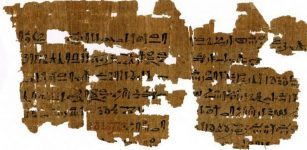 Knowledge Of Ancient Medicine Hidden In Undeciphered Egyptian Manuscripts
Archaeology | Aug 16, 2018
Knowledge Of Ancient Medicine Hidden In Undeciphered Egyptian Manuscripts
Archaeology | Aug 16, 2018 -
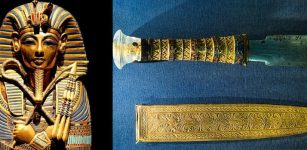 Tutankhamun Had An Ancient Dagger From Outer Space
Archaeology | Jun 1, 2016
Tutankhamun Had An Ancient Dagger From Outer Space
Archaeology | Jun 1, 2016 -
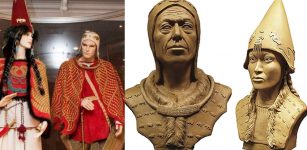 Stunning Facial Reconstruction Of ‘Siberian Tutankhamun’ And His ‘Queen’ Who Died 2,600 Years Ago
Archaeology | Jan 12, 2021
Stunning Facial Reconstruction Of ‘Siberian Tutankhamun’ And His ‘Queen’ Who Died 2,600 Years Ago
Archaeology | Jan 12, 2021 -
 Secrets Of The Lost Ancient Sahara Civilization
Civilizations | Oct 26, 2018
Secrets Of The Lost Ancient Sahara Civilization
Civilizations | Oct 26, 2018 -
 DNA Unravels Mysteries Of The Crannogs, Ancient Artificial Islands Older Than Stonehenge
Archaeology | Oct 10, 2022
DNA Unravels Mysteries Of The Crannogs, Ancient Artificial Islands Older Than Stonehenge
Archaeology | Oct 10, 2022 -
 Legend Of Tarenyawagon Who Came From The Heavens And Ascended To The Stars In His Fast Flying Shining Canoe
Featured Stories | Feb 25, 2019
Legend Of Tarenyawagon Who Came From The Heavens And Ascended To The Stars In His Fast Flying Shining Canoe
Featured Stories | Feb 25, 2019 -
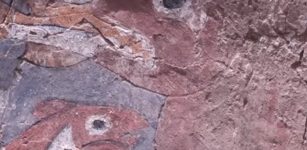 1,700-Year-Old Moche Culture Ceremonial Banquet Hall Discovered In Peru
Archaeology | Jan 12, 2018
1,700-Year-Old Moche Culture Ceremonial Banquet Hall Discovered In Peru
Archaeology | Jan 12, 2018 -
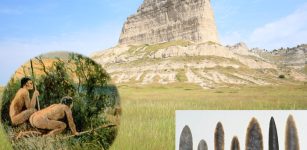 Evidence Humans Walked The Great Plains 18,000 Years Ago May Have Been Found – Archaeologists Say
Archaeology | Mar 14, 2022
Evidence Humans Walked The Great Plains 18,000 Years Ago May Have Been Found – Archaeologists Say
Archaeology | Mar 14, 2022 -
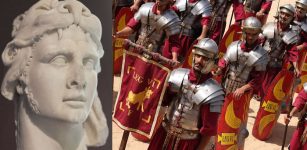 Rome’s Most Wanted Enemy – Poison King Mithradates Murdered 80,000 Roman Civilians
Ancient History Facts | Dec 17, 2017
Rome’s Most Wanted Enemy – Poison King Mithradates Murdered 80,000 Roman Civilians
Ancient History Facts | Dec 17, 2017 -
 Unas (Unis): First Pharaoh Who Decorated His Burial Chamber With Pyramid Texts
Featured Stories | Jun 3, 2021
Unas (Unis): First Pharaoh Who Decorated His Burial Chamber With Pyramid Texts
Featured Stories | Jun 3, 2021 -
 Historic Graffiti Made By Soldiers Sheds Light On Africa’s Maritime Heritage – New Study
Archaeology | May 6, 2022
Historic Graffiti Made By Soldiers Sheds Light On Africa’s Maritime Heritage – New Study
Archaeology | May 6, 2022 -
 Ancient Coffin Of Priest Psamtik, Son Of Osiris And Five Replicas Of Goddess Maat Sent On Upcoming Expo
Archaeology | Oct 5, 2021
Ancient Coffin Of Priest Psamtik, Son Of Osiris And Five Replicas Of Goddess Maat Sent On Upcoming Expo
Archaeology | Oct 5, 2021 -
 Was Tintagel Castle A Fortress Used By Iconic Hero King Arthur?
Featured Stories | Mar 12, 2016
Was Tintagel Castle A Fortress Used By Iconic Hero King Arthur?
Featured Stories | Mar 12, 2016 -
 Underwater Stone Age Village Habonim North Found Off Israel’s Carmel Coast Thrived During Climate Change
Archaeology | Aug 1, 2024
Underwater Stone Age Village Habonim North Found Off Israel’s Carmel Coast Thrived During Climate Change
Archaeology | Aug 1, 2024


